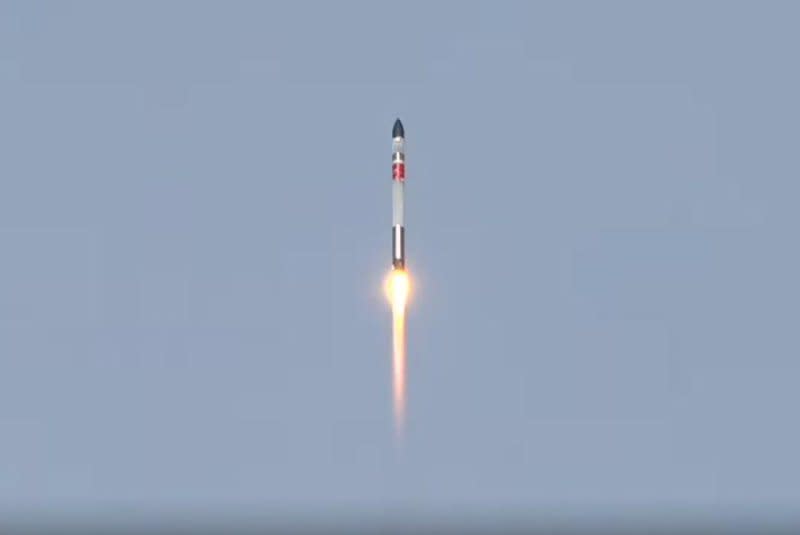Rocket Lab launches NASA's solar sail technology into orbit

April 23 (UPI) -- Rocket Lab launched NASA's new composite solar sail into space where it will undergo weeks of testing, using sunlight to propel it through the solar system.
The solar sail technology lifted off aboard Rocket Lab's Electron, along with South Korean payload NEONSAT-1 in a rideshare mission called "Beginning of the Swarm," from Launch Complex 1's Pad B in New Zealand at 10:32 a.m. NZT on Wednesday.
While the Rocket Lab launch was delayed by about 17 minutes following a ground systems issue, it marked the second liftoff in just a 16-minute span after SpaceX launched 23 Starlink satellites into low-Earth orbit from Florida.
"Welcome to orbit, NEONSAT-1 and NASA's Advanced Composite Solar Sail System," Rocket Lab wrote in a post on X.
"Mission success for our 47th Electron launch."

Welcome to orbit, NEONSAT-1 and NASA's Advanced Composite Solar Sail System
Mission success for our 47th Electron launch
Thank you to our mission partners @NASA @NASAAmes and @kaistpr. We're proud to deliver reliable and dedicated access to space for you! pic.twitter.com/2x1nXeVHeU— Rocket Lab (@RocketLab) April 24, 2024
NEONSAT-1 is an Earth-observation satellite developed by the Satellite Technology Research Center at the Korea Advanced Institute of Science and Technology. It was deployed at 323 miles above Earth about 50 minutes after liftoff.
NASA's Advanced Composite Solar Sail System, or ACS3 for short, was deployed at an altitude of 620 miles, 55 minutes later. ACS3 will orbit at a distance more than twice the altitude of the International Space Station.
"We have confirmed deployment of the Advanced Composite Solar Sail System in low-Earth orbit!" NASA wrote several hours after the launch in a post on X. "Next steps are powering up and making contact with the ground."
After an initial flight phase, lasting about two months, the microwave oven-sized ACS3 will unfurl its reflective 860 square-foot solar sail, which is roughly the size of six parking spots.
NASA plans to test the sail, and the composite boom that holds it, in a series of maneuvers to adjust the spacecraft's orbit and gather data for future missions that could use larger sails.
The solar sail will use the pressure of the sunlight to move through space, eliminating the need for heavy propulsion systems. The sail will be positioned toward or away from the sun for photons to bounce off of the reflective sail to push the spacecraft.
"Flight data obtained during the demonstration will be used for designing future larger-scale solar sail systems for space weather, early-warning satellites, asteroid and other small body reconnaissance missions, and missions to observe the polar regions of the sun," Rocket Lab wrote in a mission description.
According to NASA, the lightweight, compact design of the composite booms, which are flexible and reinforced with carbon fiber, could eventually be used to frame structures on the moon or on Mars.

